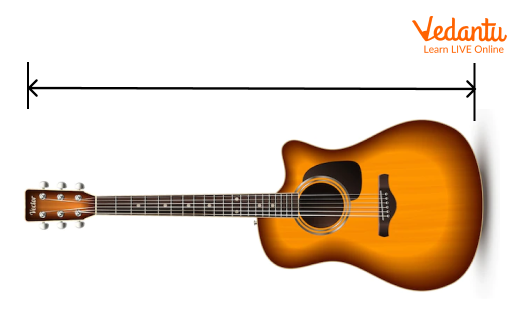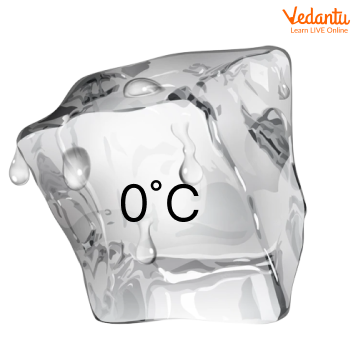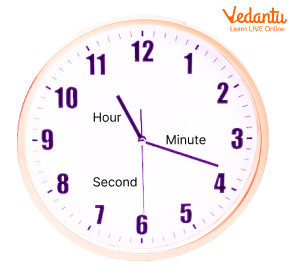




Why Is Measurement Important in Everyday Maths?
You might have definitely heard the words - big, small, long, short etc. Do you know how we understand that a thing is long or short, big or small? For this calculation, we measure. Do you know what measurement is? It is nothing but a process of determining a number that represents the size or amount of something. Measurement plays a significant role in engineering, science, construction, other technical fields, and almost all other activities.
What is the Measurement?
Measurement is defined as the act of determining the size of an object i.e., its length, weight, capacity, or other aspects. It can be better understood as a process of defining physical items using numbers. Let’s understand with an example:
Measurement Example
Look at the 2 guitars below.

Different lengths of Guitars
Here, we can say that the left guitar is smaller than the right guitar.
Although we are comparing two guitars here, we still don’t know the individual measurement of the two guitars. Hence, the statement “Left guitar is smaller than the right guitar” is serving a very limited purpose.
But, if we say the length of the left guitar is one metre whereas the length of the second guitar is 2 metres, therefore the first guitar is bigger than the second guitar by 1 metre.
This reason is giving us a better conclusion mathematically as here we know the measurement of individual guitars and their difference.
Units of Measurement
The different units of measurement are:
Length
Length, also known as distance, measures the size of something from one end to the other.
Example of Length: The length of the guitar given here is one meter (slightly more than one yard).

Length
Area
The area is the region occupied by a two-dimensional object such as a triangle, square, or circle, in a plane.
Example of Area: The dog is sitting inside one square meter tile.

Area
Volume
Volume, also known as capacity, is defined as the amount of space occupied by a three-dimensional object.

Volume
Here, the jug has exactly one litre or slightly more than 2 pints of water in it.
Mass (Weight)
Mass is defined as the amount of matter in any solid object or any volume of a liquid or gas.
Example of Mass: Here, the mass of a bar of gold is one kilogram or slightly more than 2 pounds.

Mass (weight)
Temperature
Temperature defines how cold or hot an object is. The temperature is generally measured using the thermometer on a Celsius or Fahrenheit scale.
Example of Temperature: The block of ice here measures 0⁰ Celsius or 32⁰ Fahrenheit.

Temperature
Time
Time is defined as the ongoing sequence of events taking place. The time is measured in seconds, minutes, hours, days, weeks, months, and years.
Example of Time: Here, the clock is showing at half past 6, or it can also be said as 6 hours 30 minutes.

Time
System of Measurement
The two standard systems of measurement are:
Metric System
US Standard Units
Let’s briefly discuss the two measurements systems:
Metric System
The Metric System is the primary system of measurement. It is a measurement system that uses kilometres, litres, and milligrams to measure the length, volume, and weight of different objects. Also, the metric system is based on 10s. For example, a centigram is 10 times larger than the milligram and a litre is 10 times larger than the decilitre.
US Standard Units
The US standard unit is commonly used in the US. The different units of measurement in the US standard system include the following units:
Liquids: Fluid, Ounces, Cups, Pints, Quarts and Gallons
Mass: Pounds, Tons, and Ounces
Length: Feet, Inches, Miles, and Yards.
Temperature: Fahrenheit.
The US Standard Unit is also known as the United States Customary Units.
Conclusion
In short, measurement is all about finding a number that represents the size or amount of something. Also, it is important to learn about measurement because it enables us to quantify the world around us.
FAQs on What Is Measurement in Maths? Definition, Units & Examples
1. What is measurement in Maths?
In Maths, measurement is the process of finding a number to describe the size or amount of something, like its length, weight, or capacity. We do this by comparing the object to a fixed, standard unit. For example, when we use a ruler to find that a pencil is 15 centimetres long, we are performing a measurement.
2. What are the three main types of measurement we use every day?
The three most common types of measurement we encounter daily are:
- Length: This tells us how long, tall, or far an object is. It is measured in units like metres (m) and centimetres (cm).
- Weight (or Mass): This tells us how heavy an object is. It is measured in units like kilograms (kg) and grams (g).
- Capacity (or Volume): This tells us how much a container can hold, usually a liquid. It is measured in units like litres (L) and millilitres (mL).
3. What is the importance of using standard units for measurement?
Using standard units (like metre, kilogram, second) is extremely important because they provide a consistent and universal reference. If everyone used non-standard units like their own handspan or footstep, measurements would vary from person to person, leading to confusion and errors in trade, construction, and science. Standard units ensure that a measurement of '1 kilogram' means the same thing everywhere in the world.
4. What is the difference between standard and non-standard units of measurement with examples?
The key difference lies in their consistency:
- Non-standard units are informal and can vary. Examples include measuring a desk's length using handspans or a room's width using footsteps. The result changes depending on whose hand or foot is used.
- Standard units are fixed, globally accepted, and do not change. Examples include using a ruler to measure in centimetres, a weighing scale for grams, or a measuring cup for millilitres. These units ensure accuracy and uniformity.
5. How are the measurements of length, weight, and capacity different from one another?
While all are types of measurement, they describe different properties of an object. Length measures distance in one dimension (e.g., how tall a door is). Weight measures the amount of matter in an object, or how heavy it is (e.g., a bag of sugar). Capacity measures the volume a container can hold (e.g., how much water is in a bottle). You would measure a rope in metres (length), a watermelon in kilograms (weight), and juice in litres (capacity).
6. Why is the metric system often called a decimal-based system?
The metric system is called a decimal-based system because its units are related by powers of 10. This makes conversions very simple. For example, there are 100 centimetres in 1 metre and 1000 grams in 1 kilogram. To convert between units, you just need to multiply or divide by 10, 100, 1000, etc., which is as easy as moving the decimal point.
7. What are the seven basic SI units of measurement used in science?
The International System of Units (SI) defines seven fundamental units from which all other units are derived. These are:
- Length - metre (m)
- Mass - kilogram (kg)
- Time - second (s)
- Electric Current - ampere (A)
- Temperature - kelvin (K)
- Amount of substance - mole (mol)
- Luminous Intensity - candela (cd)
8. Can we measure abstract things like happiness or honesty?
No, we cannot measure abstract concepts like happiness, bravery, or honesty using standard mathematical units like metres or kilograms. Measurement in science and maths applies to physical quantities—attributes of objects or events that can be quantified. While fields like psychology try to rate such feelings on scales, this is different from the precise, objective measurement of physical properties.























